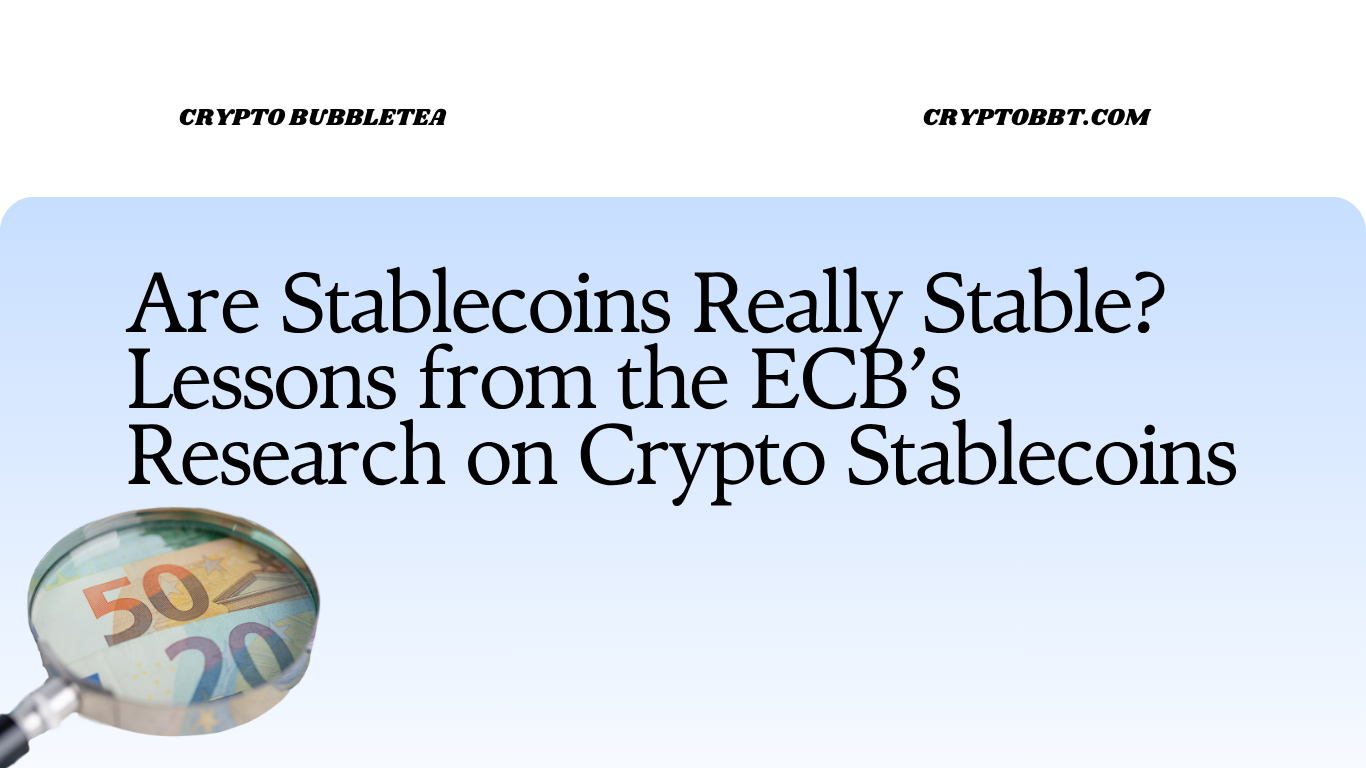Are Stablecoins Really Stable? Lessons from the ECB’s Research on Crypto Stablecoins
The Promise of Stability in an Unstable World
As Bitcoin and Ethereum swing wildly in price, stablecoins promise something revolutionary — a digital asset that doesn’t fluctuate.
But do they really deliver on that promise?
A foundational paper from the European Central Bank (ECB) “In Search for Stability in Crypto-Assets: Are Stablecoins the Solution?” breaks down how different stablecoin models work, and whether they actually create stability in the crypto ecosystem.
Spoiler: the answer isn’t that simple.
How the Study Defines Stability
The ECB researchers categorize stablecoins using three key dimensions:
Issuer Accountability: Who’s responsible for maintaining the peg, and can users trust them?
Decentralization of Responsibilities: Is control centralized (like a company) or distributed (like a DAO)?
Underlying Value Anchor: What backs the stablecoin? Is it fiat money, crypto collateral, or an algorithm?
These categories reveal that “stability” depends more on mechanism design than on marketing promises.
Three Types of Stablecoins
1. Fiat-Backed Stablecoins
Example: USDT, USDC
Backed 1:1 by cash or treasury bills.
Easy to understand and relatively stable, but centralized as users rely on a corporate issuer.
2. Crypto-Backed Stablecoins
Example: DAI
Collateralized by other crypto assets like ETH.
Transparent and decentralized, but vulnerable to collateral price drops.
3. Algorithmic Stablecoins
Example: the early “seigniorage” coins and newer synthetic designs.
Use supply-adjustment algorithms instead of reserves.
Innovative but often the least stable in market stress.
The Core Trade-Off: Innovation vs. Stability
The paper highlights a critical tension:
“The more innovative the design, the harder it is to ensure stable value.”
Simple, centralized coins are stable but rely on trust in the issuer.
Complex, decentralized coins aim to remove trust but introduce technical fragility.
Ultimately, no design can be both fully decentralized and perfectly stable without some kind of collateral or oversight.
What This Means for Crypto Investors and Builders
For investors:
Stablecoins aren’t automatically stable. Always ask: Who issues it? What backs it? How transparent are the reserves?
For builders and projects:
If you’re integrating stablecoins into your ecosystem, from payments to DeFi protocols, emphasize governance, redemption mechanisms, and transparency. These are what give stablecoins credibility during stress events.
For marketers and educators:
Explaining how stability actually works (and what can break it) builds trust far better than hype.
Final Takeaway: Mechanism Matters
Stablecoins can support a more reliable crypto economy but only when designed around credible collateral, clear governance, and transparency.
The ECB paper reminds us that stability in crypto is not a given; it’s engineered.
And how it’s engineered determines whether a stablecoin acts as a bridge to financial innovation or a flashpoint for the next crisis.
